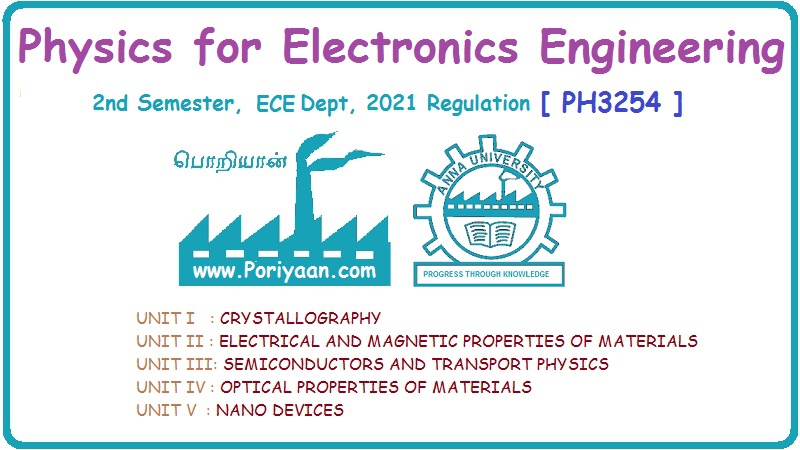Physics for Electronics Engineering: Unit V: Nano Devices
Quantum Structures
Definition, Explanation, Types, Construction | Nano Devices
When a bulk material is reduced in its size, atleast one of its dimension, in the order of few nanometres, then the structure is known as quantum structure.
QUANTUM STRUCTURES
Definition
When
a bulk material is reduced in its size, atleast one of its dimension, in the
order of few nanometres, then the structure is known as quantum structure.
Explanation
The
volume of a box can be reduced by shortening its length, width or, and height.
The same is true for the region occupied by the electrons in a solid.
There
are three dimensions to confine the bulk material. The quantum confinement
needs confining at least one of these dimensions to less than 100 nanometers or
even just a few nanometers.
The more the dimensions are confined, the more the density of states function looks like that of an atom. This progressive discretization gives new ways to understand real atoms, behavior of electrons and developing quantum confined electronic devices.
A
structure in which the motion of the electrons or holes are confined in one or
more directions by potential barriers is called quantum confined structure.
The
quantum confined structure is classified into three types based on the
confinement directions. They are
(i)
quantum well
(ii)
quantum wire
(iii)
quantum dot
(i)
Quantum well (2 - dimension)
Definition
When
the electrons are confined inside a region of minimal width, ie., confinement
in one dimension "quantum-well" is created.
In
other words, if one dimension is reduced to the nanometre range while the other
two dimensions remain large, then we get a structure known as quantum well.
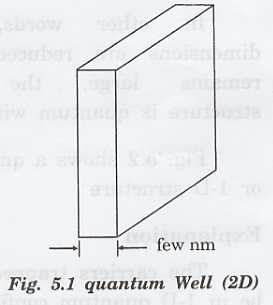
Fig.
5.1 shows a quantum well or 2-D structure
Construction
Quantum
wells are made from alternative layers of different semiconductors or by deposition
of very thin metal films.
Explanation
The
quantum well is a larger structure in which the carrier particles are free to
move in two dimensions. The particles are confined in one dimension hence, they
are considered to be quantum confinement.
Due to the confinement of carriers, the quantum well structure has important applications in making useful devices.
Use
Quantum
wells are now widely used to make semiconductor lasers and other important devices.
(ii)
Quantum wire (1 dimension)
Definition
When
the electrons are confined two mutually perpendicular directions, then the structure
is known as quantum wire.
In
other words, if two dimensions are reduced and one remains large, the resulting
structure is quantum wire.
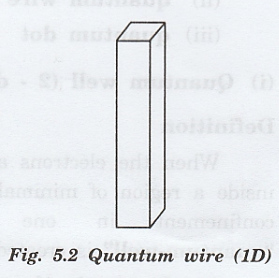
Fig.
5.2 shows a quantum wire or 1-D structure
Explanation
The
carriers trapped in such structures are considered to be in 1-D quantum confinement.
In this case, a carrier is only free to move its trajectory along the wire.
Example
Examples
of quantum wire structures are nanowires, nanorod and nanotube.
(iii)
Quantum Dots (0 dimension)
Definition
When
all the three dimensions are minimized the resulting structure is known as quantum
dot.
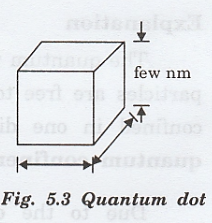
The
dot can be particle located inside a larger structure or on its surface. It can
also be a place where electrons have been trapped using electrical fields.
Fig.
5.3 shows a quantum dot or 0-D structure
Explanation
In
quantum dot, the carriers has only confined states i.e., there are no freely
moving carriers. Though a quantum dot has many thousands of atoms, carriers it
is considered more like a single atom due to its peculiar properties.
Use
Quantum
dot can be used in a quantum computer and lasers etc.
Fig.
5.4 and Fig. 5.5 explains the processes of diminishing the size in the case of rectilinear
geometry and curvilinear geometry, respectively.
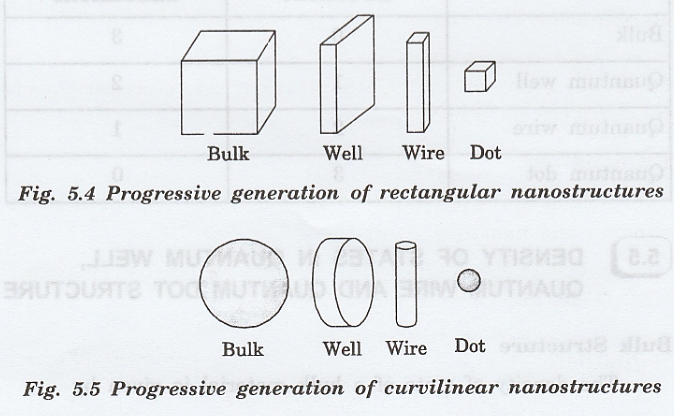
Fig. 5.6 shows a comparison of three quantum confined structures with bulk material.

As
quantum wells and quantum wires each have at least one dimension in which the electrons
are free to move and these structures exhibit "partial confinement". However,
quantum dots exhibit "total confinement".
The
classification of quantum confined structures is shown in Table 5.1.
Table
5.1
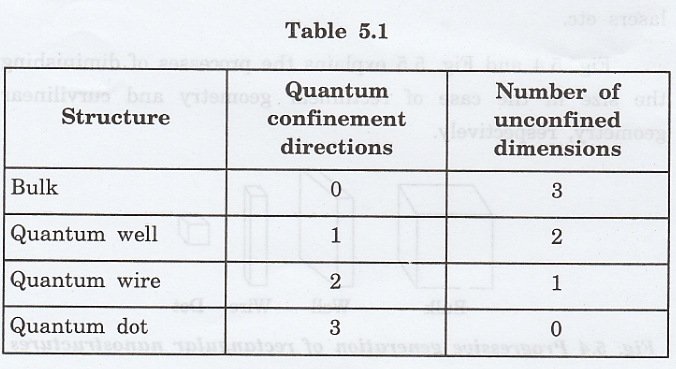
Physics for Electronics Engineering: Unit V: Nano Devices : Tag: : Definition, Explanation, Types, Construction | Nano Devices - Quantum Structures
Related Topics
Related Subjects
Physics for Electronics Engineering
PH3254 - Physics II - 2nd Semester - ECE Department - 2021 Regulation | 2nd Semester ECE Dept 2021 Regulation
